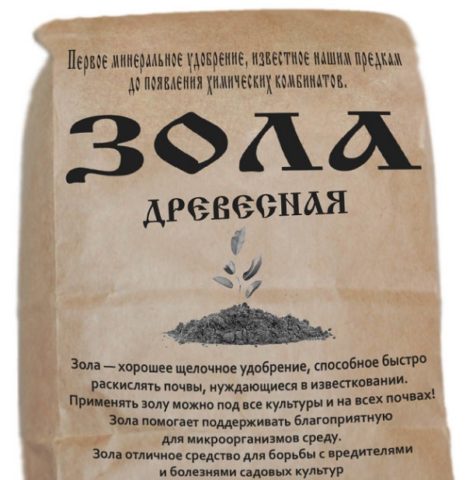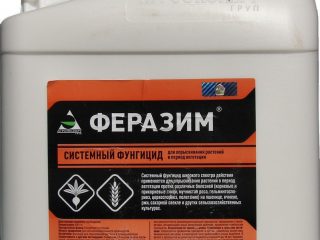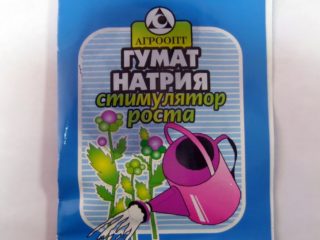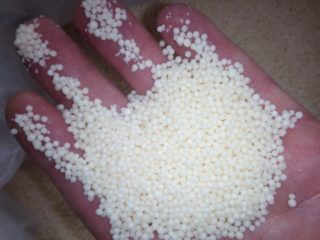Content
- 1 Composition and value of liquid nettle fertilizer
- 2 Useful properties of green nettle dressing
- 3 For which plants is nettle used as a fertilizer
- 4 How to make nettle fertilizer
- 4.1 Recipe # 1: Classic nettle infusion for plant nutrition
- 4.2 Recipe # 2: How to make dandelion nettle fertilizer
- 4.3 Recipe number 3: Liquid fertilizer from nettle for plants with yeast
- 4.4 Recipe number 4: Infusion of nettle fertilizer with bread
- 4.5 Recipe number 5: Cooking nettle infusion with ash
- 5 Terms, rules and norms of feeding
- 6 How to use nettle infusion against diseases and pests
- 7 What plants can not use nettle infusion
- 8 Conclusion
Top dressing from nettle infusion is included in the arsenal of almost all gardeners. They use organic fertilizer to grow vegetables, berries, and garden shrubs. Such feeding does not require financial costs, but it gives an excellent result: the crop yield increases.
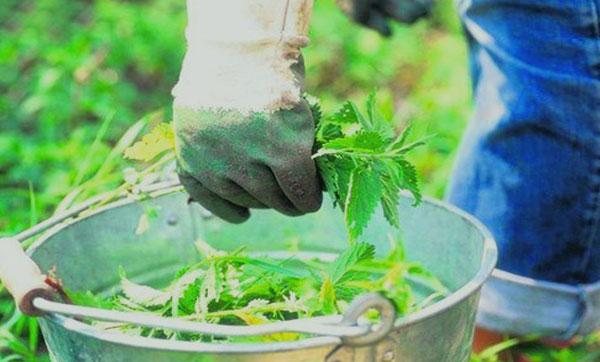
A burning crop is an excellent source of readily available nitrogen and silicon for feeding
Composition and value of liquid nettle fertilizer
As an organic fertilizer, gardeners and gardeners have been using nettle for a long time. The thing is that the green mass contains many useful elements, which, during the fermentation process, turn into a liquid. They contribute to the active growth and development of horticultural crops, which allows you to count on getting an environmentally friendly harvest.
Nettle composition:
- 34-35% potassium. Thanks to this microelement, which is responsible for the movement of nutrients, plants become powerful and strong.
- 37-38% calcium. This component is responsible for metabolism and photosynthesis. Its deficiency can cause stunted growth.
- 6-7% magnesium. With a sufficient intake of this substance, photosynthesis improves, which means that the plants become strong.
- There are few iron, sulfur, nickel, copper, manganese and silicon in the culture, but they are also necessary for the normal development of other plantings.
In addition to these trace elements, nettle and its infusion also contain tannins, phytoncides, tannins that can scare away harmful insects.
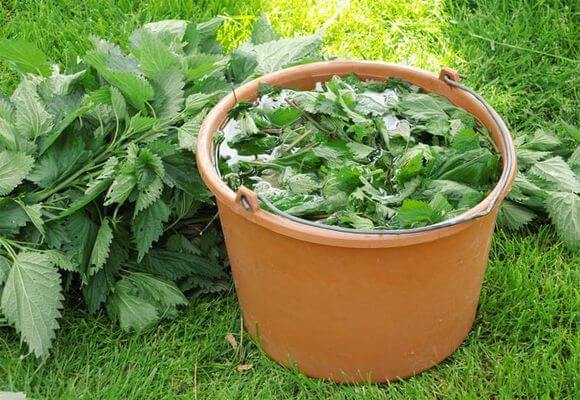
Nettle infusion carbonates increase the immunity of horticultural crops
Useful properties of green nettle dressing
Green fertilizer has many beneficial properties. Nettle infusion is great for vegetables, berries, fruit trees and shrubs, garden flowers and indoor crops.
The benefits of nettle as a plant fertilizer:
- Enhances the growth of horticultural crops, stimulates flowering, promotes the accumulation of simple carbons in fruits, improves their taste.
- Can be fertilized under the root or over the leaves.
- Increases the synthesis of chlorophyll.
- The infusion promotes active growth of the root system, increases resistance to diseases and pests.
- The effect of weed fertilization on weak plants is especially noticeable. After a while, the foliage will turn green.
- Soil, watered with nettle infusion is an excellent home for earthworms.

The area where the nettle grows contains a large amount of humus
For which plants is nettle used as a fertilizer
Experienced gardeners know which garden crops are suitable for fertilizing with nettle infusions. Novice gardeners may have problems.
For these crops, feeding is important:
- potatoes;
- tomatoes;
- cucumbers;
- cabbage;
- peppers;
- roses and flowers;
- houseplants.
How to make nettle fertilizer
The green mass grows in all summer cottages or wastelands.No special knowledge is required. You just need to follow some rules:
- For infusion, collect nettles until seeds appear on it.
- You need to cut only healthy shoots that do not show signs of disease.
- Pour half or a third with water so that there is a place for fermentation.
- You need to infuse the liquid from three days to two weeks.
- In order for the trace elements to be evenly distributed, the mixture must be mixed several times.
- It is better to cook nettle dressing in the sun to speed up the fermentation process.
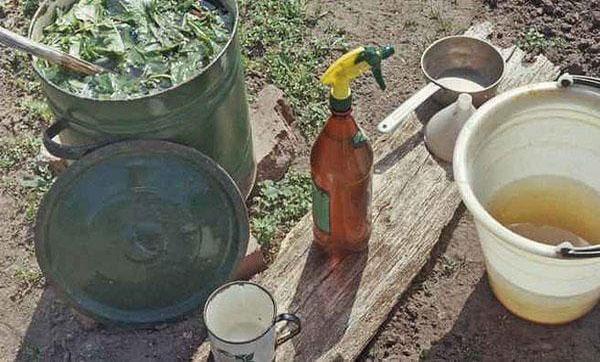
To get rid of the pungent smell, you can add a little liquid valerian.
There are many options for preparing nettle-based dressings. Some of them are listed below.
Recipe # 1: Classic nettle infusion for plant nutrition
For feeding horticultural crops, it is recommended to use a liquid infusion, which is poured over the plants under the root or over the leaves. Of course, the concentration of the solution will be different.
To prepare top dressing you will need:
- chopped green mass - 1 kg;
- cold water - 10 liters.
The base is placed in a non-metallic container, the size of which is not less than 20 liters. Pour in cold water, expose the dishes with infusion in the sun. Stir every day to speed up the fermentation process.
After 10-15 days, the infusion of nettle for plant nutrition is ready for use. If root administration is performed, then filtration is optional.
Application rules:
- To fertilize cabbage, parsley, lettuce, 1 tsp of the nutrient composition is diluted with the same amount of water.
- To feed the rest of the plants, add 5 hours of water for 1 hour of the infusion.
- For foliar feeding, the proportion of 1:10 is adhered to.
Recipe # 2: How to make dandelion nettle fertilizer
The nutritional value of nettle infusion can be enhanced by adding dandelions. It is also recommended to pour granulated sugar or old (not fermented) jam into the container. Pour warm water over the grass. The infusion is prepared for 10-15 days.
Dandelions are not the only ones used to obtain organic fertilizers. Top dressing is suitable for stepchildren after pruning tomatoes, other weeds growing in the garden (but not cereals):
- shepherd's bag;
- comfrey;
- sagebrush;
- yarrow;
- mother and stepmother;
- chamomile.
In addition to cereals, you should not add field bindweed, hogweed and any poisonous herbs for the preparation of the infusion.
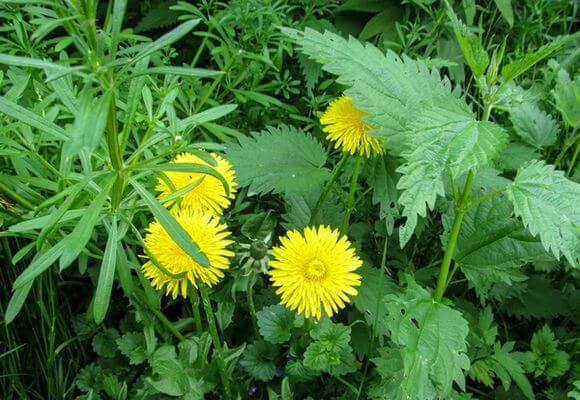
Dandelions are rich in minerals that will enhance the health benefits of nettle infusion
Recipe number 3: Liquid fertilizer from nettle for plants with yeast
To speed up the fermentation process, fresh or dry baker's yeast is added to the green mass.
For the first option, you will need:
- granulated sugar - 100 g;
- warm water - 2 liters;
- fresh yeast - 100 g.
Half of the warm water is poured into a glass jar, sugar and yeast are added. When the ingredients are dissolved, the rest of the liquid is poured in. The container is placed in a warm place for fermentation. When the process stops, the yeast infusion is ready for use.
For the second option, the starter cultures are taken:
- granulated yeast - 10 g;
- sugar - 2 tbsp. l .;
- water - 2.5 liters.
The yeast additive is introduced so that it has time to ferment by the time the plants are fed with nettle fertilizer.
In 10 liters of pure water add 1 liter of nettle infusion and 200 g of yeast starter culture. First, the soil is watered well, and then the plantings are fertilized.
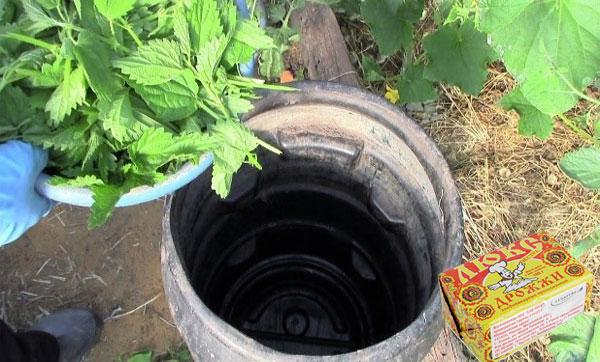
Fertilizing with yeast is especially loved by garden strawberries.
Recipe number 4: Infusion of nettle fertilizer with bread
Fresh bread or crackers are often added to green nettle and herb fertilizer. You can add baker's yeast, although this is not necessary.
Nettle, bread are cut into a container and poured with water at room temperature. The container is filled ¾ so that there is room for fermentation.
After 10-14 days, the nettle infusion will be ready.It is bred in a ratio of 1:10 for feeding various vegetables, flowers, berries and fruit trees, shrubs.
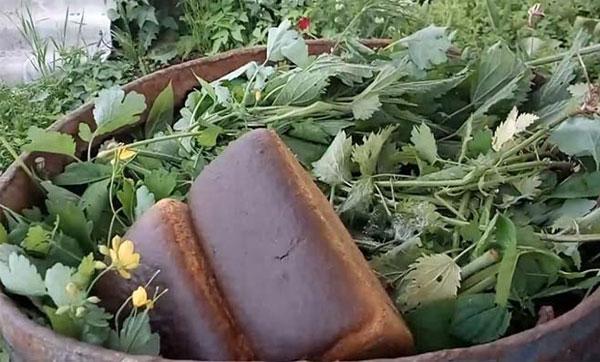
I especially like green dressing for strawberries and strawberries, the berries become larger and sweeter
Recipe number 5: Cooking nettle infusion with ash
For root or foliar top dressing, 1 tbsp can be added to the nettle fertilizer. ash for 10 liters of infusion. After filtration, the solution is suitable for spraying garden crops from pests, as well as phytophthora.
Top dressing from nettle with ash increases the yield of cucumbers, tomatoes, sweet bell peppers. Cabbage is not against him, only you need to use a concentrated infusion.
Terms, rules and norms of feeding
Watering with nettle infusions is carried out once every seven days, not more often. No more than 1-2 liters of nutrient solution is consumed per plant. As for foliar feeding, it can be applied once a month.
Tomatoes and peppers are watered already at the seedling stage and before flowering (weekly). An adult plant will need about 1 liter of infusion. Nettle for cucumbers can be used throughout the growing season every two weeks.
For vegetable crops
Potatoes, tomatoes, bell peppers are crops that need nitrogen feeding. It is this element that is contained in the nettle infusion. Particular attention should be paid to weak plants, the number of dressings in this case should be increased. Prepare a solution according to any of the recipes, water the plantings during the growing season.
The flowering of nightshade crops will be abundant, the fruit set is 100%. In addition, the taste of the harvest is improved. For cabbage, it is better to use infusion with dandelions.
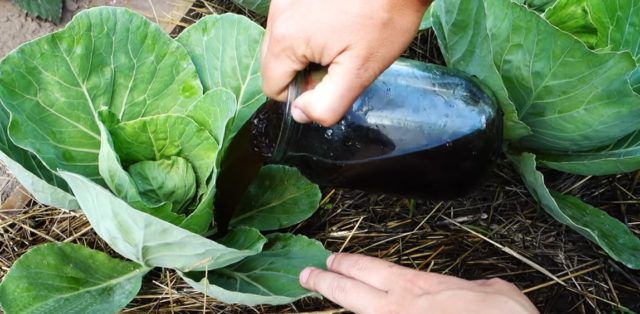
It is useful to plant nettle branches in the aisles, they will scare away slugs and snails
For fruit and berry crops
Any fruit and berry crops, including grapes, are useful to fertilize with nettle infusion. You can cook it according to different recipes and water it in turn. Root and foliar feeding of garden plants is carried out, starting in early spring.
At least 20 liters of nettle infusion are poured under each apple, cherry, plum or apricot. Top dressing is repeated after 10-15 days. Under bushes of raspberries, grapes and currants - 10 liters each. For each bush of strawberries or garden strawberries, 500 ml will be enough.
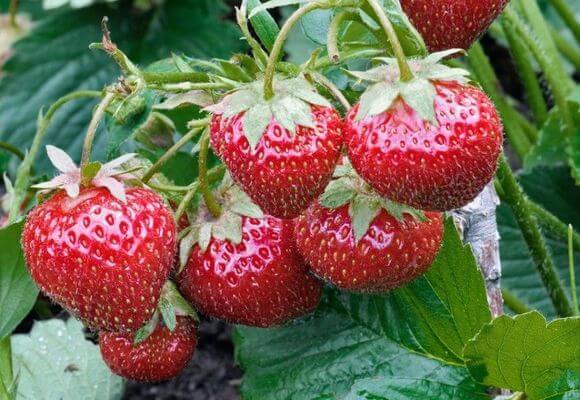
Strawberries need to be watered with nettles during growth and fruiting.
The cake remaining after watering does not need to be thrown away. They can mulch the soil under raspberries, apple trees, plums, grapes. Plants need such a cushion of leftovers. This is additional feeding, creating a loose layer, therefore, the root system will breathe successfully. In addition, beneficial soil insects develop in the nutrient soil.
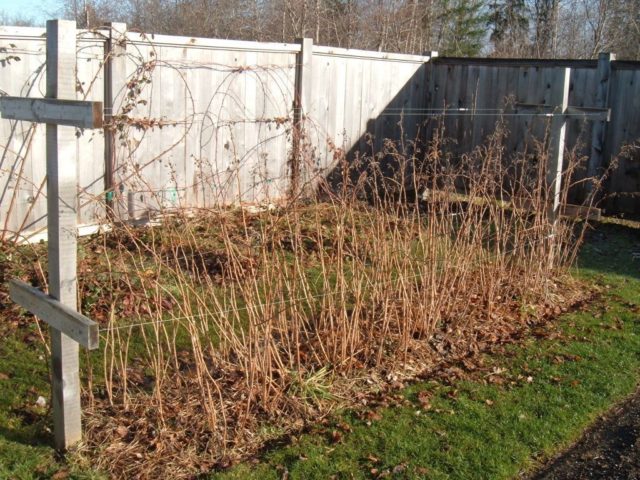
Roots covered with nettle mulch survive harsh winters more easily
For indoor plants and flowers
Not only vegetable and fruit crops need feeding. It is useful to water the infusion of indoor plants and flowers in flower beds. Top dressing from nettles makes them stronger, therefore, the formation of buds increases. Watering is necessary after 14 days.
Rose bushes are also fed with nettle infusion. Wood ash is added to it and introduced at the root into the previously watered soil. After the procedure, the rose bushes must be earthed.
As for indoor plants, you need to feed them in early spring. Most often, there is no greenery in the garden yet. In this case, you can prepare a top dressing from dry nettle leaves.
How to use nettle infusion against diseases and pests
The green dressing contains tannins, phytoncides that can repel pests. Spraying with infusion will save plantings from aphids, snails and slugs. So that the solution does not wash off immediately, laundry soap is added to it.You need to work in dry, calm weather.
It is useful to water the soil on the ridges with nettle infusion to destroy pathogens and fungal spores. If late blight appears in the greenhouse, you can dig in the green mass in the aisles to a depth of 5-7 cm. In addition, this is also top dressing.
What plants can not use nettle infusion
Not all crops growing in a garden or vegetable garden can be fed with nettle infusion. Ridges where all types of onions, garlic, peas, beans are planted are not recommended to be watered. Organic fertilization is not only useless for them, but also harmful. It suppresses these cultures.
Conclusion
Top dressing from nettle infusion is useful not only for the plants themselves, but also for the soil. The soil becomes nutritious, loose, earthworms settle in it. Many gardeners abandon mineral fertilizers in favor of natural organic infusions.
